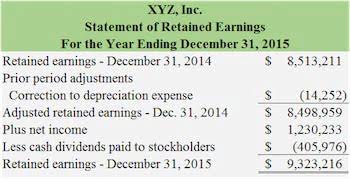
The amortized bond’s discount is shown on the income statement as a portion of the issuer’s interest expense. Interest expenses, which are non-operating costs, help businesses reduce earnings before tax (EBT) expenses. An amortized bond is a bond with the principal amount – otherwise known as face value –regularly paid down over the life of the bond.

Interest Rate

Prepayment risk is the risk that the issuer will have to repay the bond earlier than expected, which may result in a loss of future interest income. A bullet bond may be preferable if the investor wants to receive a higher yield, increase the potential capital gain, and avoid the reinvestment risk. An amortizing bond is a type of bond that pays both interest and principal to the bondholders over the life of the bond.

Amortization Schedule

The journal entries for the years 2025 through 2028 will be similar if all of the bookkeeping bonds remain outstanding. The account Premium on Bonds Payable is a liability account that will always appear on the balance sheet with the account Bonds Payable. In other words, if the bonds are a long-term liability, both Bonds Payable and Premium on Bonds Payable will be reported on the balance sheet as long-term liabilities. The combination of these two accounts is known as the book value or carrying value of the bonds. On January 1, 2024 the book value of this bond is $104,100 ($100,000 credit balance in Bonds Payable + $4,100 credit balance in Premium on Bonds Payable).
How to hedge an amortizing bond? The use of interest rate swaps, caps, and floors?
- Whether you’re a homeowner, an investor, or a corporate treasurer, understanding the practical applications and implications of these bonds is essential for making informed financial decisions.
- Amortized bonds, also known as fully amortizing bonds, are characterized by regular payments of both interest and principal over the bond’s lifespan.
- The present value of a bond is calculated by discounting the bond’s future cash payments by the current market interest rate.
- The gradual repayment of principal can result in greater price sensitivity to changes in interest rates.
However, there are also some drawbacks to investing in amortized bonds that should be considered. One of the main disadvantages is the potential impact of inflation on the fixed interest payments received. As the interest payments remain constant throughout the bond’s lifespan, they may Legal E-Billing lose purchasing power over time due to inflation. This means that the real return on investment may be eroded, especially during periods of high inflation.
- Bullet bonds can play a crucial role in diversifying an investment portfolio.
- In other words, if the bonds are a long-term liability, both Bonds Payable and Premium on Bonds Payable will be reported on the balance sheet as long-term liabilities.
- With a single maturity date, these bonds are easy to understand and manage.
- As an investor, you can appreciate the predictability of these payments, while the issuer, typically a bank or lending institution, benefits from a steady stream of income and reduced credit risk.
- The interest rate represents the market interest rate for the period of time represented by “n“.
- Initially, a larger portion of the payment goes towards interest, while a smaller portion reduces the principal balance.
These interest rates represent the market interest rate for the period of time represented by “n“. Next, let’s amortizing bonds assume that just prior to offering the bond to investors on January 1, the market interest rate for this bond increases to 10%. The corporation decides to sell the 9% bond rather than changing the bond documents to the market interest rate.
